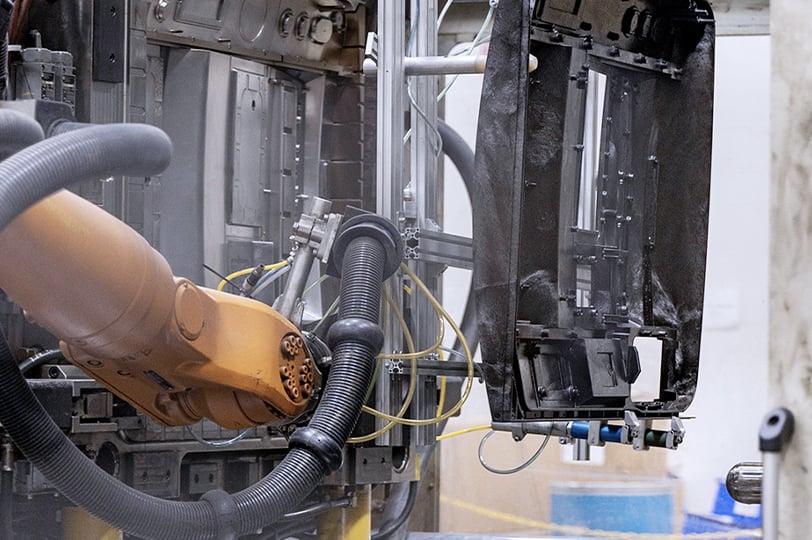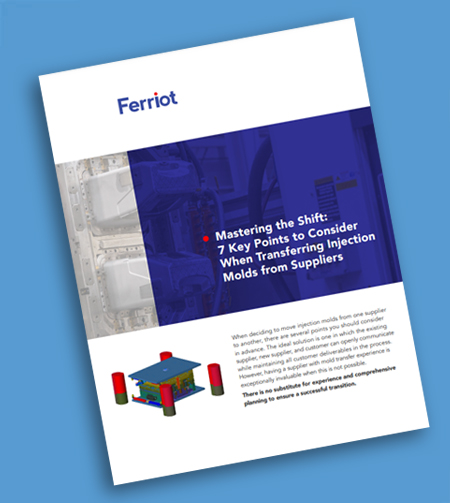As an engineer embarking on the design journey of a large-scale product, you’re undoubtedly aware of the unique set of challenges that come with creating sizable injection molded parts. From material flow to cooling strategies, every aspect of the injection molding process takes on a new dimension when dealing with large parts. In this blog, we’ll delve into the intricacies of molding large components, shedding light on the key challenges you and your injection molder are likely to encounter and providing insights to help you overcome them.
- Material Flow and Fill Challenges:
The first hurdle to tackle when molding large parts is ensuring proper material flow and complete cavity fill. With an increased distance for the molten plastic to traverse, the risk of uneven flow rates, pressure fluctuations, and temperature variations rises. This can lead to voids, incomplete filling, and inconsistent part properties. To mitigate this challenge:- Choose materials with favorable melt flow properties.
- Optimize gate and runner designs to facilitate smoother material flow.
- Consider the use of flow simulation software to predict and address potential flow issues.
- Cooling Conundrums:
Cooling large parts poses its own set of challenges. Longer cooling times and varying cooling rates can cause warping, distortion, and internal stresses as the part solidifies. Effective cooling strategies are key to maintaining part dimensions and surface quality:- Implement advanced cooling techniques, such as conformal cooling, to ensure uniform cooling.
- Adjust cooling system designs to accommodate the larger size and geometry of the part.
- Consider using materials with lower shrinkage rates to minimize post-molding dimensional changes.
- Managing Clamping Force and Mold Pressure:
Large parts require precise clamping force management to counteract the high pressures exerted during injection. Inadequate clamping force can lead to mold opening, material leakage, and compromised part quality. To address this challenge:- Optimize clamping force calculations based on material properties, part geometry, and injection pressure.
- Incorporate real-time monitoring systems to maintain consistent clamping force during the molding process.
- Injection Pressure and Melt Density:
Higher injection pressures are often necessary for ensuring proper material flow and fill in larger parts. However, managing these pressures while safeguarding mold integrity and part quality is a delicate balance:- Collaborate closely with material suppliers to select polymers that accommodate high injection pressures.
- Fine-tune injection profiles to strike the right balance between pressure and material flow.
- Structural Integrity and Part Defects:
The increased size of large parts introduces the risk of internal stresses, part defects, and variations in material properties. These issues can impact the structural integrity and long-term durability of the components:- Conduct comprehensive stress analysis to identify potential weak points and address them in the design phase.
- Opt for materials with enhanced mechanical properties to mitigate potential defects.
- Optimizing Cycle Time and Productivity:
Balancing cooling time, injection speed, and cycle time is essential for maintaining production efficiency. Finding the sweet spot between part quality and cycle time is crucial:- Leverage simulation tools to optimize cooling strategies and reduce cycle times without compromising part integrity.
Designing and molding large parts is undoubtedly a complex endeavor, but when you partner with an experienced custom injection molder who is armed with a deep understanding of the challenges and proactive strategies to address them, you will be well-equipped to navigate this intricate landscape. Factors that must be considered include material flow, cooling, clamping force, injection pressures, structural integrity, and cycle time optimization to create large-scale products that meet the highest standards of quality and performance.
Remember, the journey of molding large parts is as much a science as it is an art. Embrace the power of collaboration with material experts, mold designers, and process engineers. By engaging with a custom injection molding partner early in the process, you will enjoy products that meet the highest standards of quality and performance.



